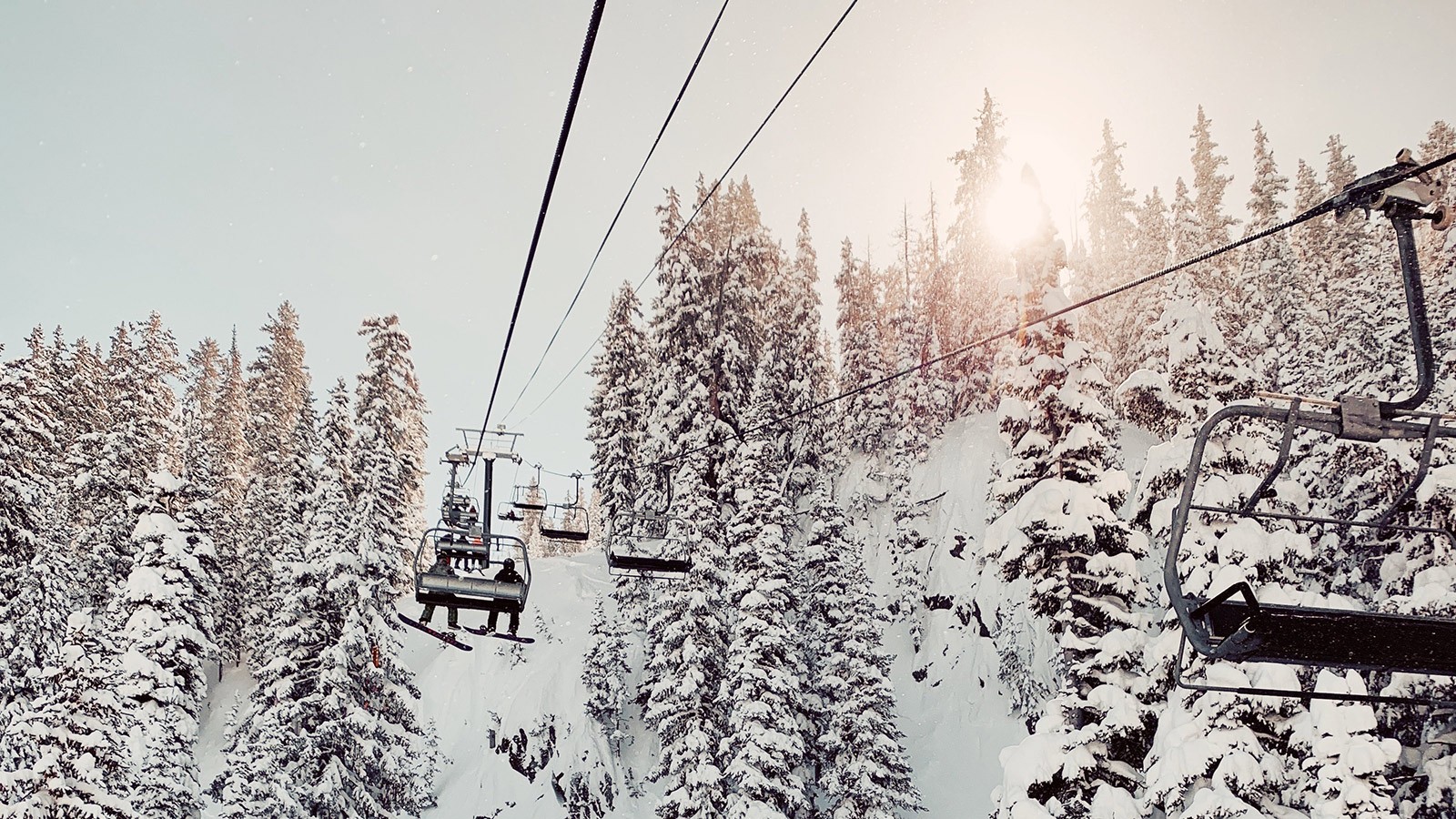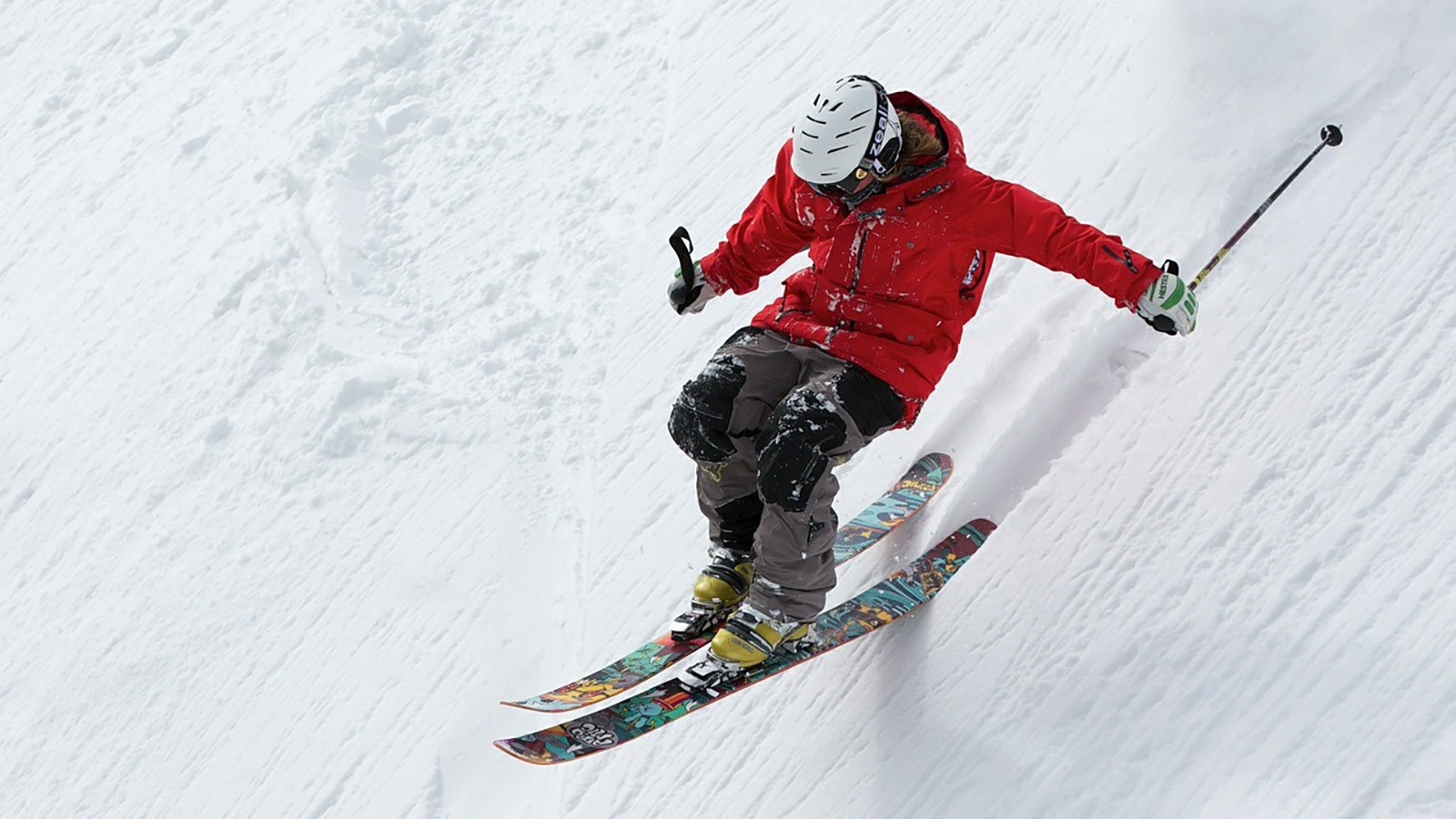Steep But Not Deep: New Research Chronicles how Utah Ski Resorts are Adapting to Climate Change
By Lael Gilbert |
New research chronicles how Utah ski resort managers are exploring new ways to do business as climate change continues to affect the ski season. Photo courtesy Jackson Blackhurst.
As the number of days with deep powder declines at Utah ski resorts, managers are exploring new ways to do business, according to newly published research from Utah State University’s Climate Adaptation Science Program. The number of cold days suitable for skiing has dropped in the state, and snowpack, snow quality and the length of the ski season are likely decreasing as well. To cope, many managers at Utah ski resorts are adopting strategies to offset negative impacts caused by the warming winter climate.
Since 2018, the average low temperature during the ski season at Utah’s 14 resorts has increased by at least 2.6°C, and by as much as 6.7°C, according to the research, and the upward trend won’t change anytime soon. A shorter and warmer ski season directly affects the bottom line at resorts, particularly when activity during holiday breaks is interrupted, they said.
Resort managers have a lot on their plates. They are concerned about the shorter season, shifting in season timing, less snow on the ground and worsening snow quality, but they are learning to adapt. Many resorts have already employed measures to keep the most popular slopes open and revenues flowing, even under changing circumstances. Managers are using adaptive tactics like joining ski conglomerates, increasing lift capacities and making artificial snow to keep people purchasing lift tickets. Managers say that the cost of implementing adaptive strategies has been a barrier, as is the lack of adequate water for snowmaking and uncertainty about weather and climate projections.
Although snowmaking can extend ski days in the short term, water supply, temperature constraints, infrastructure and operational costs may make this an unsustainable strategy for some areas in the long term, they said. Some resorts have access to water storage ponds that they can use for snowmaking; others receive water allotment from public utilities — but these resources have limits and costs. Snowmaking also requires snowmaking guns, plumbing, electricity and significant worker effort, all factors that drive up the tab.
“Climate change will continue to increase temperatures at Utah ski resorts, which means more precipitation will fall as rain rather than snow,” said Emily Wilkins, lead author on the research. “Although many Utah resorts have the ability to make snow, the proportion of the winter season where snowmaking is possible is also decreasing as temperatures warm.”
Other strategies managers are using have less to do with actual snow — they are working to offer a broader array of activities and recreation options during shoulder seasons — such as mountain biking and festivals.
“Although it’s a challenge, managers at Utah ski resorts are learning to adapt to the changing climate,” said Jordan Smith, director of the Institute of Outdoor Recreation and Tourism, and coauthor on the paper. “It’s an important trend to track because warming temperatures will eventually force us all to make adjustments in the way we live, recreate and do business.”
Artificial snowmaking can extend ski days in the short term, but water supply, temperature constraints, and costs may make this an unsustainable strategy for the long term. Photo courtesy Pxhere.
WRITER
Lael Gilbert
Public Relations Specialist
Quinney College of Natural Resources
435-797-8455
lael.gilbert@usu.edu
CONTACT
Jordan Smith
Director
Institute of Outdoor Recreation and Tourism
435-830-6294
Jordan.smith@usu.edu
TOPICS
Research 878stories Society 504stories Utah 371stories Environment 263stories Climate 151stories Outdoor 80stories Recreation 69storiesComments and questions regarding this article may be directed to the contact person listed on this page.









